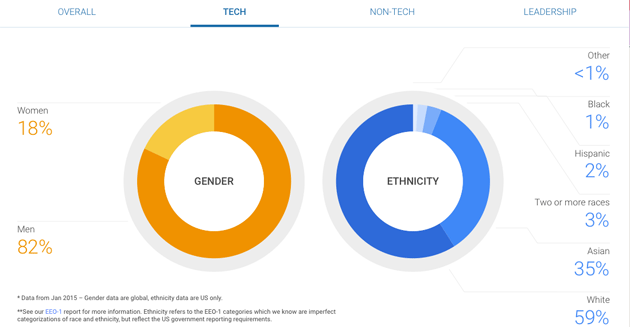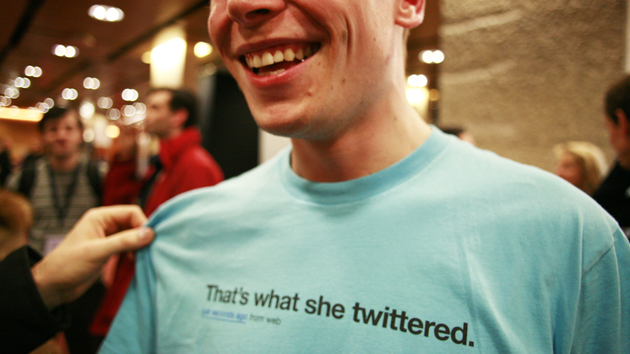Around this time last year, Google shocked Silicon Valley by voluntarily releasing statistics on the diversity of its workforce. The move helped shame other large tech companies into doing the same, and the picture that emerged wasn’t pretty: In most cases, only 10 percent of the companies’ overall employees were black or Latino, compared to 27 percent in the US workforce as a whole. For its own part, Google admitted that “we’re miles from where we want to be,” and pledged to do more to cultivate minority and female tech talent.
Now Google has an update: Its 2015 diversity stats, released yesterday, show that it has moved inches, not miles, toward a workforce that reflects America. The representation of female techies ticked up by 1 percentage point (from 17 to 18 percent), Asians gained 1 point, and whites, though still the majority, slipped by 1 point. Otherwise, the numbers are unchanged:

“With an organization our size, year-on-year growth and meaningful change is going to take time,” Nancy Lee, Google’s vice president of people operations, told the Guardian. Last year, Google spent $115 million on diversity initiatives and dispatched its own engineers to historically black colleges and universities to teach introductory computer science courses and help graduating students prepare for job searches. But unlike Intel, another big tech company that has prioritized diversity, Google has not set firm goals for diversifying its talent pool.
“While every company cannot match Intel’s ambitious plan, they can set concrete, measurable goals, targets, and timetables,” said a statement from the Reverend Jesse Jackson, who last year played a key role in convincing Google and other companies to disclose their diversity stats. “If they don’t measure it, they don’t mean it.”












